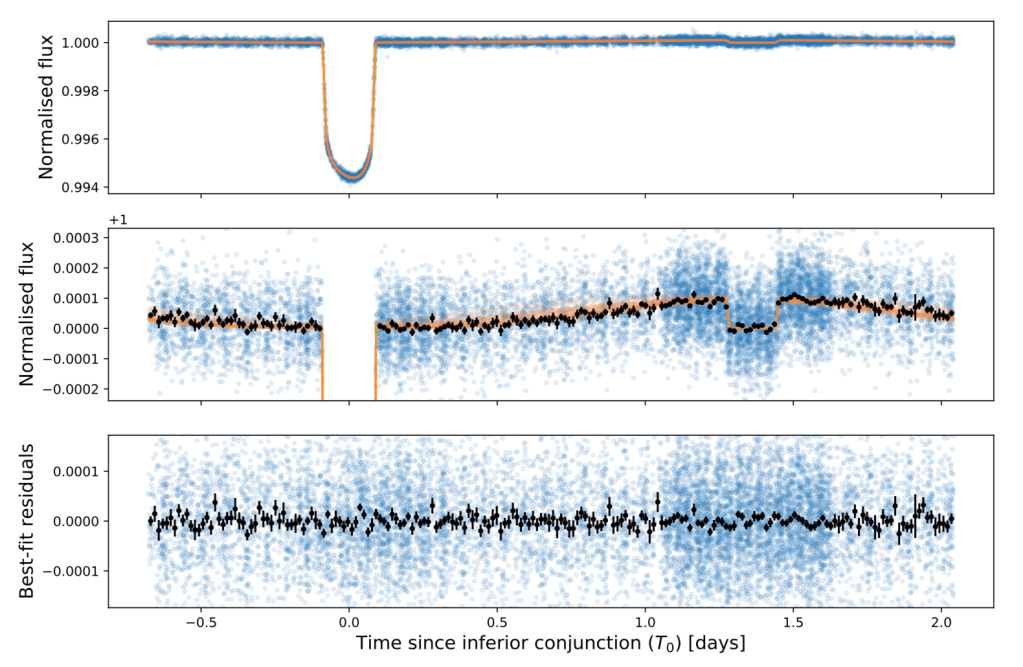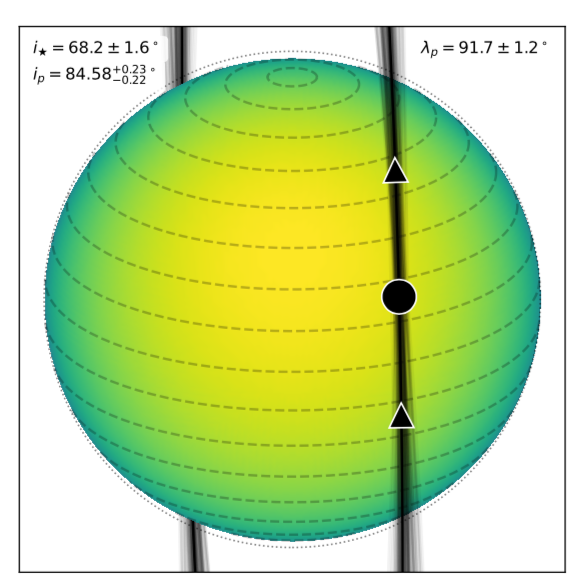The European Space Agency have put out a press release reporting the observation of a “glory effect” in observations of ultra-hot-Jupiter WASP-76b by the CHEOPS satellite.
“Cheops intensively monitored WASP-76b as it passed in front of and around its Sun-like star. After 23 observations over three years, the data showed a surprising increase in the amount of light coming from the planet’s eastern ‘terminator’ – the boundary where night meets day.”

Artist impression of glory on exoplanet WASP-76b (Credit: ESA)
“This discovery leads us to hypothesise that this unexpected glow could be caused by a strong, localised and anisotropic (directionally dependent) reflection”, said Olivier Demangeon, lead author of the study, producing a glory effect akin to a rainbow.
“You need atmospheric particles that are close-to-perfectly spherical, completely uniform and stable enough to be observed over a long time. The planet’s nearby star needs to shine directly at it, with the observer – here Cheops – at just the right orientation.”








